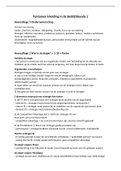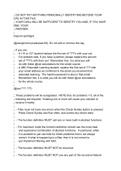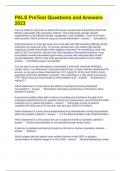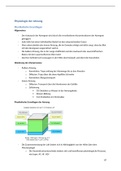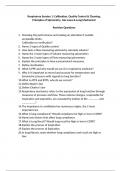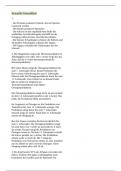Tentamen (uitwerkingen)
Test bank For Wilkins clinical assessment in respiratory care 8th edition by Huber
MULTIPLE CHOICE 1. Which of the following activities is not part of the role of respiratory therapists (RTs) in patient assessment? a. Assist the physician with diagnostic reasoning skills. b. Help the physician select appropriate pulmonary function tests. c. Interpret arterial blood gas values...
[Meer zien]




